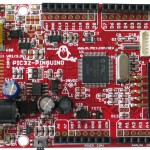ublo
bogdan's (micro)blog
bogdan » despre alegeri
08:53 pm on Dec 8, 2012 | read the article | tags: ideas
nu. nu voi merge la vot =)
dar dacă aș merge, motivul care m-ar îndeamna să votez ar fi liniștea! ne-am învățat, în cei 22 de ani de democrație, să ne adaptăm la orice situație politică, însă progresul economic și social s-a întâmplat în perioadele de stabilitate politică: guvernarea PDSR 2000-2004 și ce-a a alianței DA 2004-2008. din nefericire, nu avem nevoie de politicieni jucători, ci mai degrabă de politicieni arbitrii sau mediatori, care să asigure un context propice relansării economice.
din nefericire, orice alt ideal politic (dreptate, adevăr, cinste, demnitate etc) nu se potrivește realității și nu va putea fi implementat în niciun caz într-un singur ciclu electoral, fiind necesară o colaborare între opoziție și putere – oricare ar fi acestea – pentru a păstra un set de obiective specifice și o viziune pentru o perioadă de 20-30 de ani.

bogdan » life lessons #2: ce e preludiul?
| read the article | tags: life lessons
Silviu Prigoană, pentru Playboy România (nr. 1(111), ianuarie 2009, pg. 43):
Preludiul nu-i o chestiune care se întâmplă în momentul în care te-ai aruncat în pat. Nu, femeia trebuie să aibă cinci orgasme până ajunge în pat, iar penetrarea să fie bonus. Femeia trebuie făcută în timpul zilei să-și dorească penetrarea. Dacă te duci acasă cu flori, deja femeia a avut un orgasm; dacă îi vorbești frumos și n-o jignești, îi mai oferi un orgasm; dacă îi lauzi mâncarea, alt orgasm.

sursă foto: Nașul.tv
bogdan » life lessons #1: context matters
08:59 pm on Dec 5, 2012 | read the article | tags: life lessons
Joshua Bell, after playing his $3.5 million Strad, at l’Enfant subway station in Whashington DC:
When you play for ticket-holders,” Bell explains, “you are already validated. I have no sense that I need to be accepted. I’m already accepted. Here, there was this thought: What if they don’t like me? What if they resent my presence …
In the same WP article, Mark Leithauser, a senior curator at the National Gallery explained:
Let’s say I took one of our more abstract masterpieces, say an Ellsworth Kelly, and removed it from its frame, marched it down the 52 steps that people walk up to get to the National Gallery, past the giant columns, and brought it into a restaurant. It’s a $5 million painting. And it’s one of those restaurants where there are pieces of original art for sale, by some industrious kids from the Corcoran School, and I hang that Kelly on the wall with a price tag of $150. No one is going to notice it. An art curator might look up and say: ‘Hey, that looks a little like an Ellsworth Kelly. Please pass the salt.’
(source: The Washington Post, April 8th, 2007)

bogdan » valoarea informației
01:13 am on Nov 26, 2012 | read the article | tags: nice2know
un mic exemplu despre valoarea informației. avem jocul de mai jos. poți apăsa pe oricare dintre imaginile roșii din stânga pentru a alege unul dintre semne: piatră, hârtie sau foarfece. în același timp, calculatorul alege la întâmplare unul dintre semne, afișându-l în dreapta. regulile jocului sunt foarte simple: piatra pierde în fața hartiei dar câștigă în fața foarfecelor și hărtia pierde în fața foarfecelor. în cazul în care alegi același semn cu al calculatorului este remiză și nimeni nu câștigă niciun punct.
până aici totul este clar. poți să îl joci de test de câteva ori. indiferent ce strategie alegi, ținând cont că în acest moment ai doar informația de mai sus, ai șanse egale de căștig în fața calculatorului. mai mult, fiecare dintre voi, după un număr mare de runde, veți fi câștigat aproximativ 33.33% din numărul de jocuri.
dacă ai studia jocul calculatorului, ai observa că în 36% din cazuri calculatorul alege foarfece, în 32% din cazuri piatră și în 32% din cazuri hârtie, informație suficientă pentru a înclina balanța în favoarea ta. strategia cea mai bună în această situație e să joci întotdeauna piatră. pentru că în acel moment, proabilitatea de a câștiga o rundă devine:
100% * 36% + 0% * 32% + 0% * 32% = 36% față de
33.33% * 36% + 33.33% * 32% + 33.33% * 32% = 33.33% în cazul perfect aleator.
poți testa aceste observații folosind joculețul de mai jos. pentru teste relevante va trebui sa joci un număr destul de mare de runde.
tu:
adversar:
runde jucate:
bogdan » noi muncim!
02:10 pm on Nov 25, 2012 | read the article | tags: ideas
în primele 9 luni ale anului, 16 481 de firme au intrat în insolvență. dacă nu pare alarmant, sunt cu 7.59% mai multe decât în 2011 și cu 17.17% mai multe decât în 2010 (de-aici). acum e? experiența ultimilor ani mi-a scos în evidență doi factori care prevestesc declinul.

lipsesc rezultatele
cu rădăcini adânci în ideologia marxist-leninistă a României socialiste, generații întregi au muncit pentru că trebuia. fast-forward în uniunea europeană, unde ajutați de programele pre- și post-aderare am dobândit cunoștințe suficiente despre managementul unui proiect: cu scopul, obiectivele, activitățile, monitorizarea, evaluarea și sustenabilitatea lui. din nefericire, asemeni unui copil care învață o poezie, primele elemente ale ciclului de viață al unui proiect sunt stăpânite mai bine decât cele din urmă. și asta ne costă. pentru că ancorați în construirea obiectivelor perfecte și a procedurilor prin care activitățile sunt implementate și monitorizate, pierdem din vedere esențialul: măsura în care ne atingem scopul.
am văzut de nenumărate ori eforturi impresionante investite în campanii de marketing și p.r. care s-au tradus în vânzări modeste, reorganizări și restructurări care au ucis afaceri, investiții în produse geniale care atunci când au fost gata nu au fost valorificate corespunzător, sau – cu tentă electorală – focusul pe campanii online când nicușor dan ne-a arătat că un individ curat, cu o campanie de p.r. perfectă poate obține maximum 10%. exemple sunt multe pentru fiecare categorie.
soluția? adu-ți aminte care a fost scopul inițial și scrie-l pe o hârtie în fiecare dimineață. poate sună aiurea, însă având scopul în minte în fiecare zi, acesta îți va influența fiecare decizie.
lipsa educației
odată cu democrația, am importat din vest și modelele de succes. tocilari care au strâns averi impresionante renunțând la facultate și făcând ceea ce le place în garajul părinților. din păcate am importat doar jumătatea frumoasă a poveștii, pentru că în spatele fiecărui personaj se află echipe întregi de management care îi oferă acestuia – sau oricărui alt om aflat la conducere – materia primă pentru deciziile bune: informațiile.
explozia de oameni bogați din anii ’90 a avut ca promotor informațiile culese, procesate și scurse din fosta securitate. întreruperea acestui flux providențial trimițându-i pe majoritatea în praful din care s-au ridicat. din fericire, educația oferă o soluție agreată de convenția de la geneva pentru a obține informații folositoare. cei care și-au păstrat averea, fie și-au construit echipe de consilieri competenți, fie s-au extins atât de mult în prima fază încât declinul lor a fost întârziat (dinu patriciu).
soluția? învață. dezvoltă-te. cumpără inteligență.
sursă foto: andertoons.com
bogdan » loterie
10:58 pm on Nov 4, 2012 | read the article | tags: nice2know
 ana* s-a hotărât să joace la loterie în fiecare săptămână. ea crede că la un moment dat șansa îi va surâde. tradițional, la noi jocul constă în extragerea a șase bile dintr-o urnă care conține 49 de posibilități. probabilitatea de a fi norocosul câștigător, jucând o singură variantă simplă (cost? 4 lei) este de 1 la 10,068,347,520. să presupunem că ana are 30 de ani și o speranță de viață de 78 de ani (src), putând astfel să joace de 2,496 de ori. pentru a-și maximiza șansele, ana va juca întotdeauna aceeași variantă. astfel, probabilitatea pentru a câștiga o dată în tot acest timp este:
ana* s-a hotărât să joace la loterie în fiecare săptămână. ea crede că la un moment dat șansa îi va surâde. tradițional, la noi jocul constă în extragerea a șase bile dintr-o urnă care conține 49 de posibilități. probabilitatea de a fi norocosul câștigător, jucând o singură variantă simplă (cost? 4 lei) este de 1 la 10,068,347,520. să presupunem că ana are 30 de ani și o speranță de viață de 78 de ani (src), putând astfel să joace de 2,496 de ori. pentru a-și maximiza șansele, ana va juca întotdeauna aceeași variantă. astfel, probabilitatea pentru a câștiga o dată în tot acest timp este:
2,496 x (1 / 10,068,347,520) x (10,068,347,519 / 10,068,347,520)2,495 = 2.497 x 10-7
adică, o șansă din patru milioane. conform statisticilor uniunii europene, este de 946 de ori mai probabil să moară într-un accident de mașină (src) și de 112,134 mai probabil să dezvolte cancer la sân (src). singurul eveniment mai improbabil este să îi i-a locul monicăi tatoiu. mai exact, de 1.922 ori mai improbabil! =)
* am folosit un nume generic, pentru simplitate.
bogdan » pic32-pinguino-otg enc28j60 example
11:10 pm on Nov 1, 2012 | read the article | tags: hobby
 for a week or so i’m searching the internet for a simple example (that can be easily expanded) on how to use the pic32-pinguino-otg with a UEXT connected enc28j60 module (both from olimex). and of course i didn’t wanted to use the “universal” microchip tcp/ip stack that requires MPlab. after digging quite a lot trough the pinguino repositories, i managed to compile a set of working header files (which you can find here) and a small program from which you can ping your boards. for the library to work, copy it under %pinguino/p32/include/pinguino/libraries/ethernet, where %pinguino is the path to your pinguino installation folder. i used pinguino X.3 and it compiled fine.
for a week or so i’m searching the internet for a simple example (that can be easily expanded) on how to use the pic32-pinguino-otg with a UEXT connected enc28j60 module (both from olimex). and of course i didn’t wanted to use the “universal” microchip tcp/ip stack that requires MPlab. after digging quite a lot trough the pinguino repositories, i managed to compile a set of working header files (which you can find here) and a small program from which you can ping your boards. for the library to work, copy it under %pinguino/p32/include/pinguino/libraries/ethernet, where %pinguino is the path to your pinguino installation folder. i used pinguino X.3 and it compiled fine.
/*-----------------------------------------------------
Author: --<>
Date: 28/Oct/2012
Description:
-----------------------------------------------------*/
#include <ethernet/ip_arp_udp.h>
#define BUFFER_MAX 224
static u8 buf[BUFFER_MAX+1]; // the received message
u16 len; // the length of the received messages
void setup() {
// put your setup code here, to run once:
// this is the enc28j60 ip address
u8 myip[4] = { 192, 168, 2, 2 };
// this is the enc28j60 mac address
u8 mymac[6] = { 0x02, 0x04, 0x08, 0x10, 0x12, 0x14 };
init_ip_arp_udp (mymac, myip);
enc28j60Init (mymac);
}
void loop() {
len = enc28j60PacketReceive(BUFFER_MAX, buf);
CDC.printf("received! len: %d\n", len);
if (len == 0) {
return;
}
if(eth_type_is_arp_and_my_ip(buf, len)) {
make_arp_answer_from_request(buf, len);
return;
}
if(eth_type_is_ip_and_my_ip(buf, len)==0) {
return;
}
if(buf[IP_PROTO_P]==IP_PROTO_ICMP_V && buf[ICMP_TYPE_P]==ICMP_TYPE_ECHOREQUEST_V) {
// the ping reply
make_echo_reply_from_request(buf, len);
return;
}
}
bogdan » motivațional
10:56 pm on Oct 30, 2012 | read the article | tags: zen!
 mi-aduc aminte cu plăcere de starea pe care am avut-o la conferința leadership 530°. deși obosit și stresat am reușit să surprind puțin din scânteia pe care participanții au primit-o de la cei trei vorbitori: marian, mircea și bruno. exercițiul pe care vi-l propun – derivat din ceea ce-am prins – este următorul: în fiecare dimineață, imediat după ce te trezești, fixează-ți în minte imaginea celei mai recente realizări încercând să explorezi prin amintiri senzațiile. în același timp ascultă una dintre melodiile de mai jos și strânge cu putere pumnul drept. atunci când vei rămâne fără soluții și moralul nu va depăși nivelul podelei strânge cu putere pumnul și fredonează melodia. efectul e garantat =)
mi-aduc aminte cu plăcere de starea pe care am avut-o la conferința leadership 530°. deși obosit și stresat am reușit să surprind puțin din scânteia pe care participanții au primit-o de la cei trei vorbitori: marian, mircea și bruno. exercițiul pe care vi-l propun – derivat din ceea ce-am prins – este următorul: în fiecare dimineață, imediat după ce te trezești, fixează-ți în minte imaginea celei mai recente realizări încercând să explorezi prin amintiri senzațiile. în același timp ascultă una dintre melodiile de mai jos și strânge cu putere pumnul drept. atunci când vei rămâne fără soluții și moralul nu va depăși nivelul podelei strânge cu putere pumnul și fredonează melodia. efectul e garantat =)
tina turner – simply the best, queen – we are the champions, vangelis – chariots of fire, ennio morricone – ecstasy of gold, survivor – eye of the tiger, bon jovi – it’s my life, turisas – stand up and fight, hans zimmer – arrival to earth, michael jackson – beat it, van halen – jump
bogdan » vreau să-l fac! pot să-l fac! îl fac!
11:45 pm on Oct 26, 2012 | read the article | tags: ideas
nu mă încântă trainingurile sau conferințele motivaționale. deși am furat câteva idei de la prietenii mei traineri, consider că majoritatea cursurilor oferă «easy answers» pe care unii oameni au nevoie să le audă de la cineva cu autoritate.
cu tot scepticismul meu, ieri mi-am schimbat părerea și am văzut ce înseamnă cu adevărat un seminar motivațional.
am dat o mână de ajutor la leadership530° al lui marian și cum sunetul a încăput (ca aproape de fiecare dat?) pe mâna mea, am avut norocul să urmăresc întregul eveniment cu atenție și teamă că ceva nu va merge. energizați de marian, pregătiți de mircea, descompuși și reasamblați de bruno, strigând mantra din titlu, aproape 240 de oameni au trecut cu tălpile goale prin cărbuni proaspăt scoși din foc.
mi-e greu să exprim în cuvinte energia unei mulțimi cu un singur scop: să-și cucerească teama. și nu e nicio «șopârlă» la mijloc: focul e real, arde și e la fel de periculos că orice foc. și totuși, prin spectacolul realizat, participanșii au prins curaj și au trecut peste jar.
sub îndrumarea unui italian nebun, care a știut să facă spectacol de unul singur – folosindu-se de muzică, dansând, combinând stand-up-ul cu discursul motivațional, amestecând hipnoza cu joculețe antrenante – am văzut cum unul câte unul, indiferent de vârstă, au avut curajul să-și învingă teama.
abia acum înțeleg entuziasmul lui cristi popa când îmi povestea cum a trecut prin foc. sincer, experiența merită și sper ca data viitoare să fiu un simplu participant.
bogdan » 5 sfaturi despre cum să-ți asamblezi singur mobila
05:01 pm on Oct 14, 2012 | read the article | tags: howto
sărind peste context, mi-am luat mobilă pentru dormitor. sursa? www.targuldemobila.ro. nu insist pe detalii, ci pe faptul că a trebuit să-mi asamblez singur un pat, două noptiere, un șifoner cu patru uși și o comodă tv. mai jos 5 sfaturi referitoare la proces:
1. deși în manual scrie că o persoană poate asambla oricare dintre obiectele de mai sus cu o șurubelniță în cruce, un inbus (inclus) și un ciocan, nu recomand pornirea la drum fără o șurubelniță electrică cu doi biți (unul în cruce și un inbus potrivit) și un burghiu de 1.6 sau 2mm.
2. deși în manual scrie că pentru unele bucăți ar trebui să folosiși ținte (sunt incluse), recomand achiziționarea unor șuruburi suplimentare pentru a prinde în special spatele șifonerului. în timp țintele tind să alunece și să scape. am avut noroc și în pachetele pe care le-am primit am găsit o mulțime de șuruburi suplimentare.
3. deși în manual nu scrie, acolo unde nu sunt semne pentru ?urub (ex. balamalele ușilor, rotișe pentru deplasare) folosește burghiul de mai sus pentru a crea un canal de ghidaj: previi spargerea materialului iar șurubul va intra mult mai repede la locul lui.
4. deși în manual nu scrie, nu strânge toate șuruburile ”din prima”. mai bine prinde-le pe toate și când obiectul este asamblat, finisează-l prin strângerea tuturor șuruburilor.
5. deși în manual nu scrie, ar fi bine să ștergi toate părțile componente cu solușie pentru mobil? (ex. pronto) înainte de a le asambla.
Alte chestii care-mi vin în minte:
1. pentru protejarea parchetului în timpul deplasării unui corp mai voluminos, folosește un covoraș inserat între acesta și parchet. e mai ușor de deplasat și nu vei zgâria parchetul.
2. încearcă să construiești aproape de locul unde va fi așezat respectivul obiect.
3. ar fi bine să mai fie cineva care să-ți dea o mână de ajutor. nu mă înțelege greșit, poși să le asamblezi singur, însă ar fi puțin mai ușor.
4. pentru rezistență sporită, unele îmbinări ar putea fi unse cu adeziv (aracet). spre exemplu interiorul patului.
5. nu te zgârci la ținte sau șuruburi. dacă nu ai suficiente, cumpără.
6. din balamale poți regla modul în care se închid ușile. au câte două șuruburi. folosește-le.

find me:
in my mind:
- #artist 2
- #arts 4
- #away 3
- #bucharest 1
- #buggy 2
- #business 1
- #clothes 1
- #comics 1
- #contest 3
- #dragosvoicu 1
- #education 1
- #food 2
- #free-ideas 1
- #friends 14
- #hobby 22
- #howto 9
- #ideas 29
- #life lessons 3
- #me 59
- #mobile fun 4
- #music 51
- #muvis 17
- #muviz 13
- #myth buxter 1
- #nice2know 15
- #night out 1
- #openmind 2
- #outside 3
- #poems 4
- #quotes 1
- #raspberry 4
- #remote 56
- #replied 51
- #sci-tech 7
- #sciencenews 1
- #sexaid 6
- #subway 39
- #th!nk 4
- #theater 1
- #zen! 4